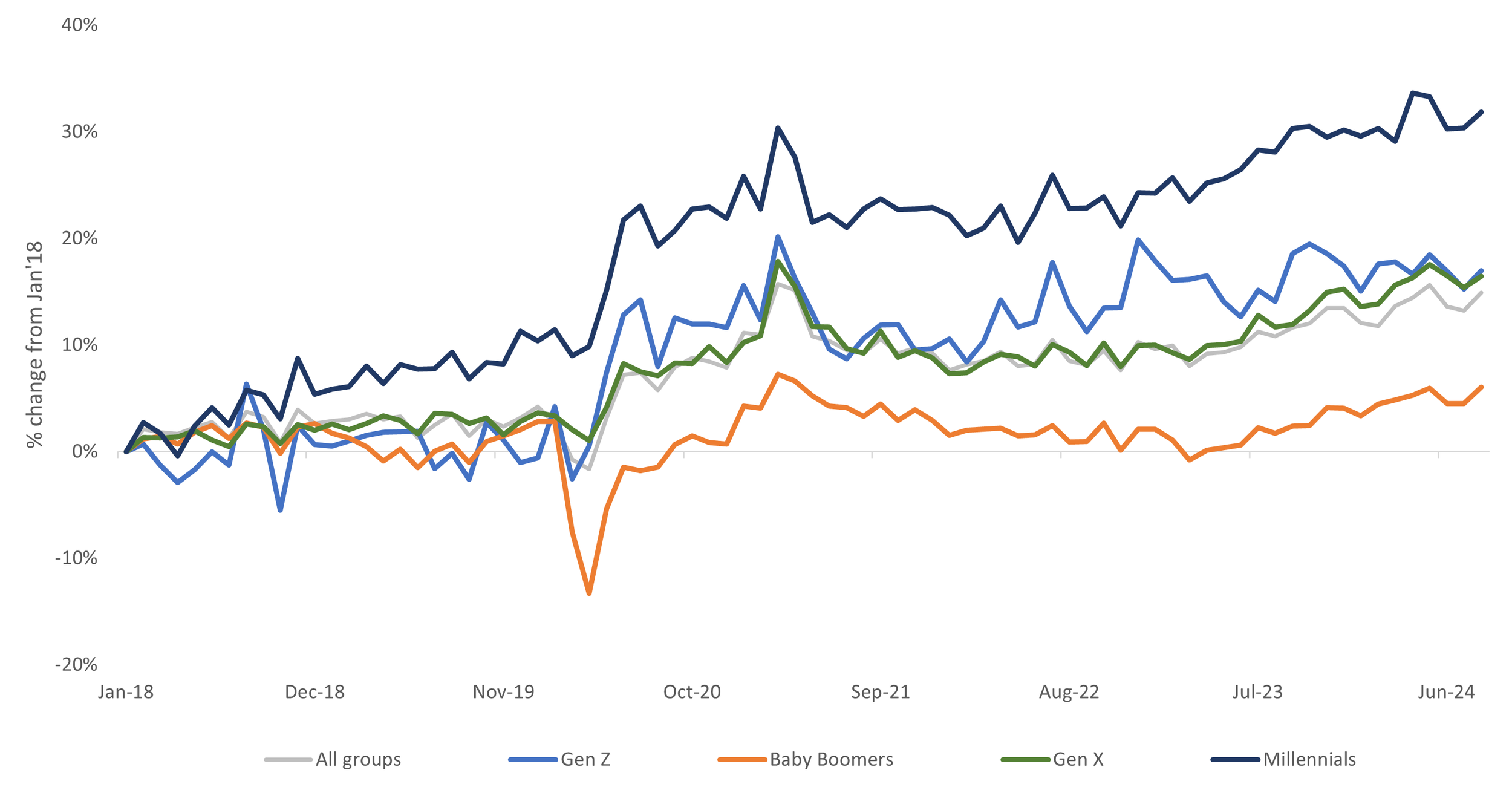All That Glitters Is Not Gold
Dr. Jeffrey Roach | Chief Economist
Last Updated: October 23, 2024
Key Points
The latest retail sales figures rose 0.4%, month over month, creating somewhat of a blowout report.
Jewelry store sales are running hot, with above-trend annual growth for the last five months as consumers are clamoring for precious metals.
Restaurant spending rebounded in September, illustrating a consumer with an appetite for eating out.
But there are important insights we find when looking under the hood as spending was supported by a specific cohort.
High-earning millennials are bolstering retail sales as other cohorts struggle.
High Demand for Jewelry
Consumer spending on jewelry took a sharp rise in recent years, and the trend has not changed. Perhaps in part because access to ultra-luxurious brands has never been easier. Even Walmart offers the discriminating consumer the gold Rolex Cosmograph Daytona.
But what should investors think about demand for precious metals? In addition to the retail demand for gold, geopolitical uncertainty and demand for alternatives within portfolio allocations have supported the precious metal market. But this post will mostly focus on what we know about consumers.
All That Glitters Is Not Gold
On the surface, the consumer looks glittery, but when we dive deeper, not all cohorts are golden. Before the pandemic, average real consumer spending was similar across incomes and ages, but after the initial onset of the pandemic, spending meaningfully diverged by income. The stimulus program temporarily spurred spending by lower-income households, but that did not last very long.
Average Growth of Retail Spending Diverged Post-COVID-19
Source: LPL Research, Numerator, Federal Reserve 10/20/2024
All income groups increased real average spending since the pandemic, but the divergence is significant. When people talk about a “resilient consumer” what is really discussed is upper-income households. To borrow from Charles Dickens, the current macro landscape is the best of times and simultaneously the worst of times.
Millennials Are Spending as They Enter Peak Earning Years
Source: LPL Research, Numerator, Federal Reserve 10/20/2024
Baby boomers cut back on spending after the pandemic and did not quite return to normal until much later than other demographics. The outlier here is the millennial cohort. As they move into their peak earning and peak spending years, millennials — especially those with upper incomes — will likely drive spending in the near future. Companies whose main target audience is the well-heeled millennial should continue to benefit.
Conclusion
Strong consumer spending in September suggests economic growth in the previous quarter was solidly above trend thanks to the high-paid millennial. Looking ahead, investors need to monitor any signs that the unemployed are finding it more difficult to earn a paycheck. Our baseline remains that the Fed will likely cut a quarter of a percent in both November and December.
LPL Research anticipates a period of higher volatility among both bonds and equities during this period of global uncertainty and the softer growth outlook. Therefore, LPL’s Strategic and Tactical Asset Allocation Committee (STAAC) maintains its neutral stance on equities. We expect volatility to remain elevated over the next few months, and believe a better entry point back into the longer-term bull market is likely.


